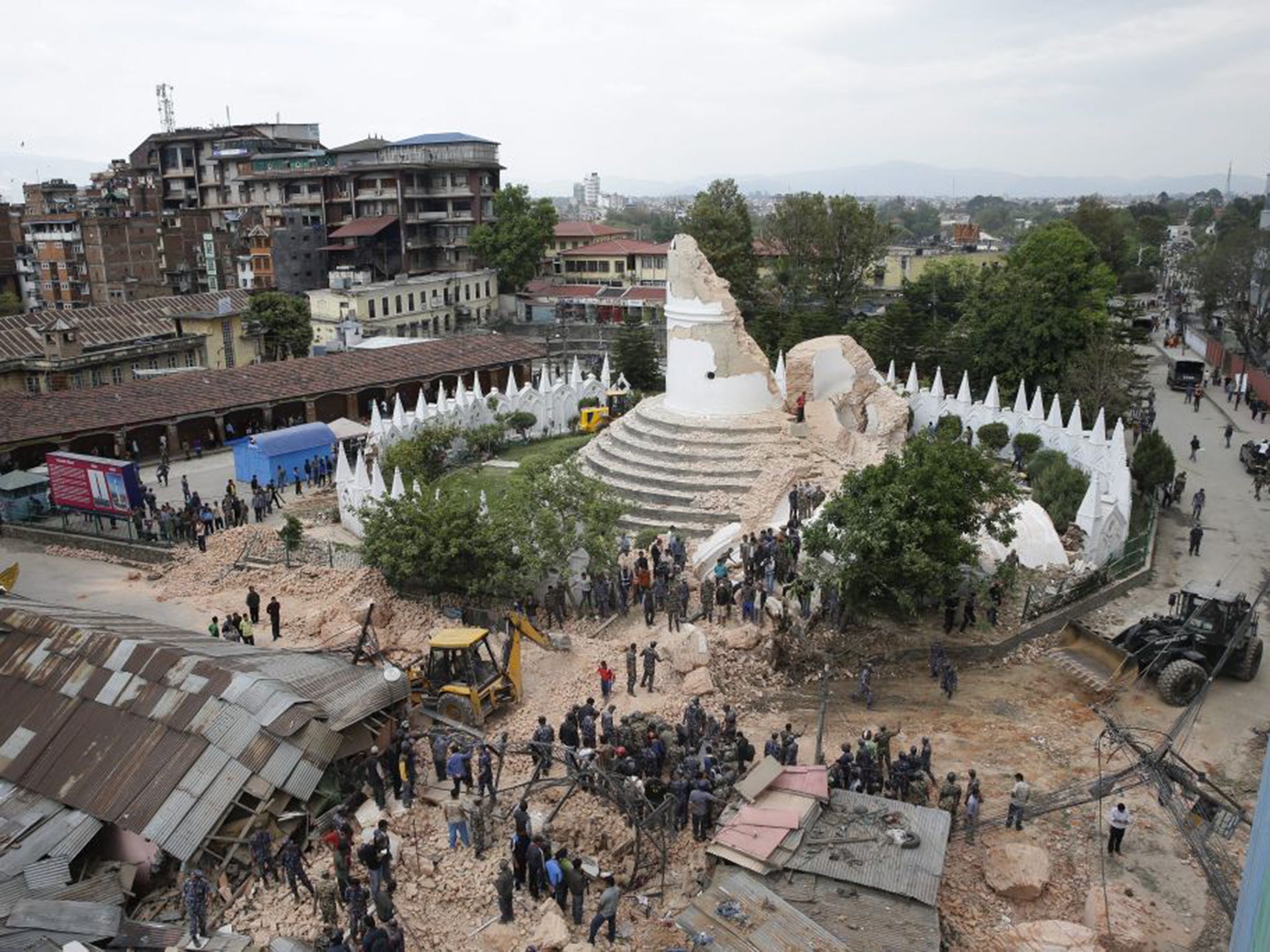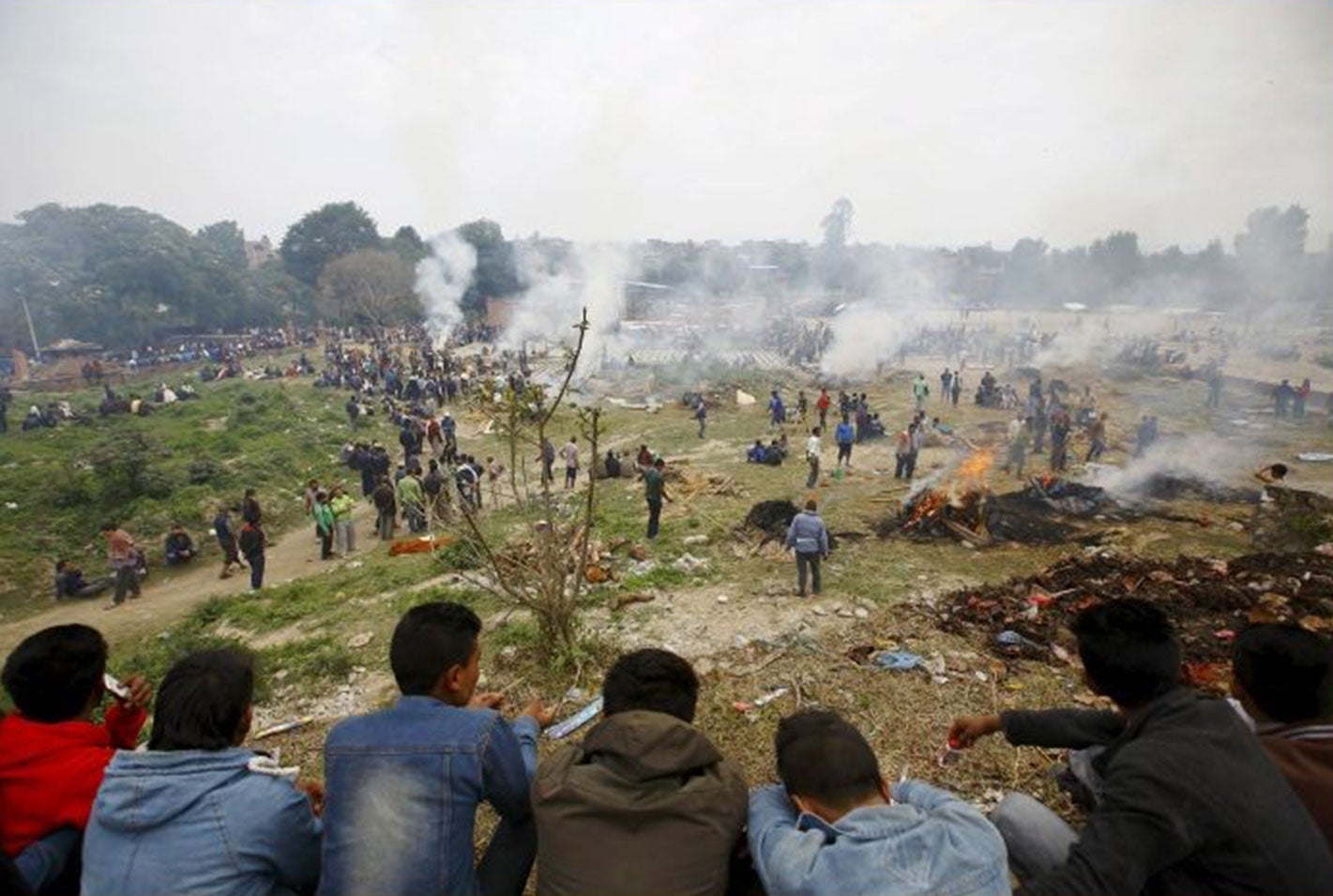Nepal earthquake: A shocking disaster in one of the most remarkable countries on earth
Imagine if London saw thousands die, and the Houses of Parliament, Tower of London and Buckingham Palace all collapse in ruins

Your support helps us to tell the story
From reproductive rights to climate change to Big Tech, The Independent is on the ground when the story is developing. Whether it's investigating the financials of Elon Musk's pro-Trump PAC or producing our latest documentary, 'The A Word', which shines a light on the American women fighting for reproductive rights, we know how important it is to parse out the facts from the messaging.
At such a critical moment in US history, we need reporters on the ground. Your donation allows us to keep sending journalists to speak to both sides of the story.
The Independent is trusted by Americans across the entire political spectrum. And unlike many other quality news outlets, we choose not to lock Americans out of our reporting and analysis with paywalls. We believe quality journalism should be available to everyone, paid for by those who can afford it.
Your support makes all the difference.The Nepal earthquake was expected. For 15 years seismologists warned of growing tension along the Nepal-Bihar fault line, which snaps at least once a century.
They feared a repeat of the 1934 disaster that killed 12,000 people, one sixth of the population, including the daughters of the King and Prime Minister. Now 2.5m people are crammed into the Valley. Would the honeycomb of fragile, hastily built homes collapse? Would only the solid, historic buildings survive?
When the 7.8 magnitude quake struck on Saturday morning the opposite happened. The Durbar squares, world heritage sites of Hindu and Buddhist temples and palaces in the historic kingdoms of Kathmandu, Patan and Bhaktapur - visited annually by thousands of tourists - are now reduced to rubble. The landmark 1824 Bhimsen tower collapsed, burying 180 people. Imagine if the Houses of Parliament, Tower of London and Buckingham Palace collapsed in ruins. Yet, surprisingly, 80 per cent of Kathmandu’s newer buildings came through intact.
I’ve worked with mother and child health projects in Nepal for 30 years, in partnership with Nepali organisations. I’ve witnessed the country’s death rates halve and literacy rates double. My colleague Dr Naomi Saville has lived in Nepal for 20 years with her husband Narayan Acharya and their three children. Narayan had built the family a rammed-earth, earthquake-proof house, outside the city near the Botanic Gardens, using traditional local craftsmen. It may have saved their lives because the house is undamaged.
Now they sleep in their garden with neighbours, under tents and tarpaulins. The earthquake alarm rings from the continuous tremors as they cook rice and lentils on an open stove for 30 people. On Saturday morning their housekeeper Niru lost six of her family, whose house had collapsed a few miles away. Another neighbour’s only son was fatally crushed by falling masonry. “It’s always the same.” said Naomi. “The poorest suffer the most”.
But the true scale of Nepal’s suffering is yet to emerge. We don’t know what has happened to the 2m people living on small subsistence farms in the scattered mountain hamlets of the districts of Gorkha, Lamjung, Kaski, Tanahun and Dhading. They lived on top of the shallow epicentre when tectonic plates shifted 10 kilometres below their rice terraces. Helicopter reports suggest utter devastation. There are few roads there, most impassable from landslides, and the death toll could be ten times higher.
What can we do to help? Immediate assistance will require international specialists in rescue from collapsed buildings within the Kathmandu Valley. Some have already arrived. A fleet of helicopters is needed to ferry aid to remote mountain communities. Time is of the essence to find buried survivors and to protect the injured and homeless.
The Nepalese are resourceful, tough people and innovative in a crisis. With support from wealthy countries their teams will work tirelessly to provide relief and prevent epidemics of disease. But they need help to provide food, water and shelter in the short term. And in the coming months and years they’ll need major infrastructural investment to rebuild their world heritage sites, and to mend their schools, hospitals, roads and utilities.

In one sense Nepal is a global treasure. The country has never been colonialized. The Nepalese are intensely proud of their Hindu and Buddhist culture, undiluted by Mughal or British invasion. Their historic kingdoms are a living window on to a culture that has survived for 2,000 years. Nepalis are warm, funny, self-deprecating people, their journalism, literature and art a vibrant mix of the traditional and the modern. The Sherpas and Gurkhas are admired the world over, but Nepal is a “garden of many flowers”, with an astonishing mix of over 120 languages and many ethnic cultures. The mountains, hills and forested plains are incomparably beautiful. And the country has tiger potential.
King Prithvi Narayan Shah, the mid-18th century architect of modern Nepal, who unified many smaller kingdoms, described his country as a “yam between two boulders”, a buffer and bridge between India and China, now the two largest emerging global economies. But for now, this friendly, beautiful, much-loved nation must cope with disaster. They deserve the world to be generous.
To donate to the Nepal earthquake relief effort go to: http://www.redcross.org.uk/en/About-us/News/2015/April/Donate-to-the-Nepal-Earthquake-Appeal
Join our commenting forum
Join thought-provoking conversations, follow other Independent readers and see their replies
Comments